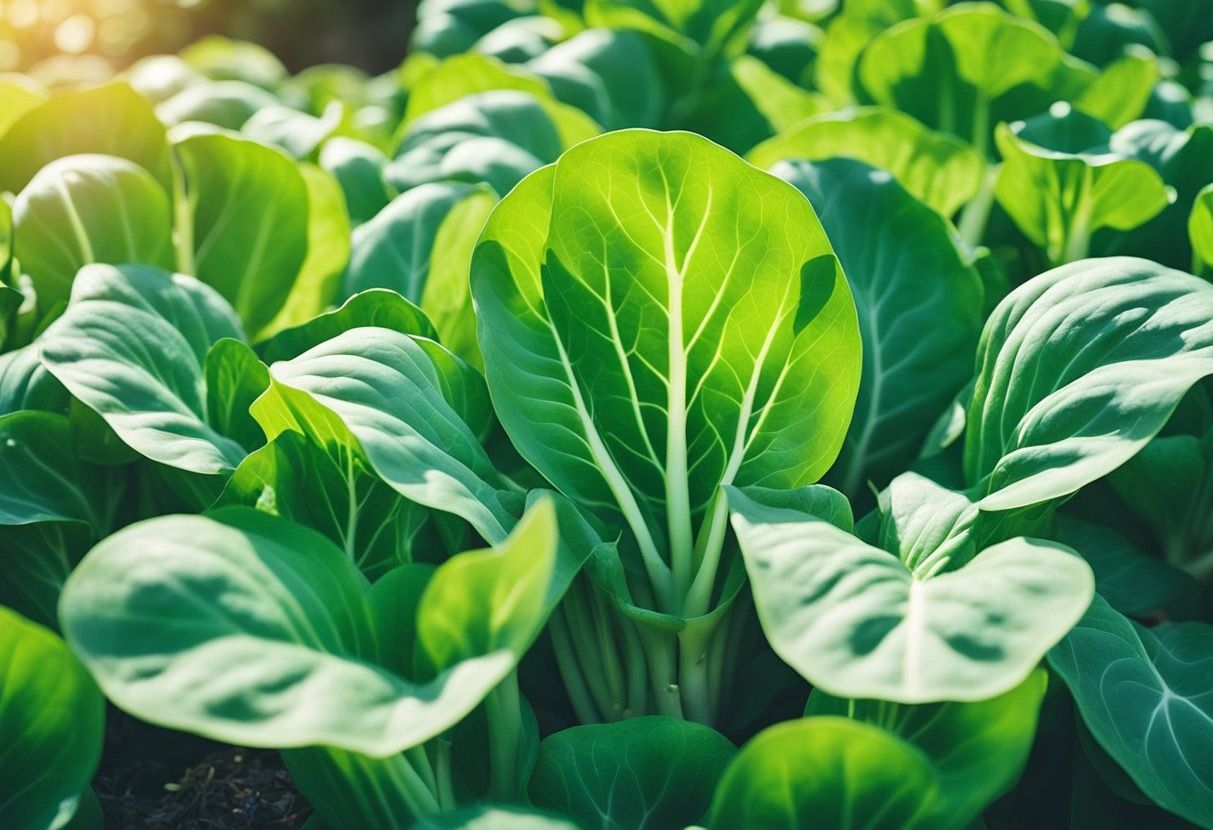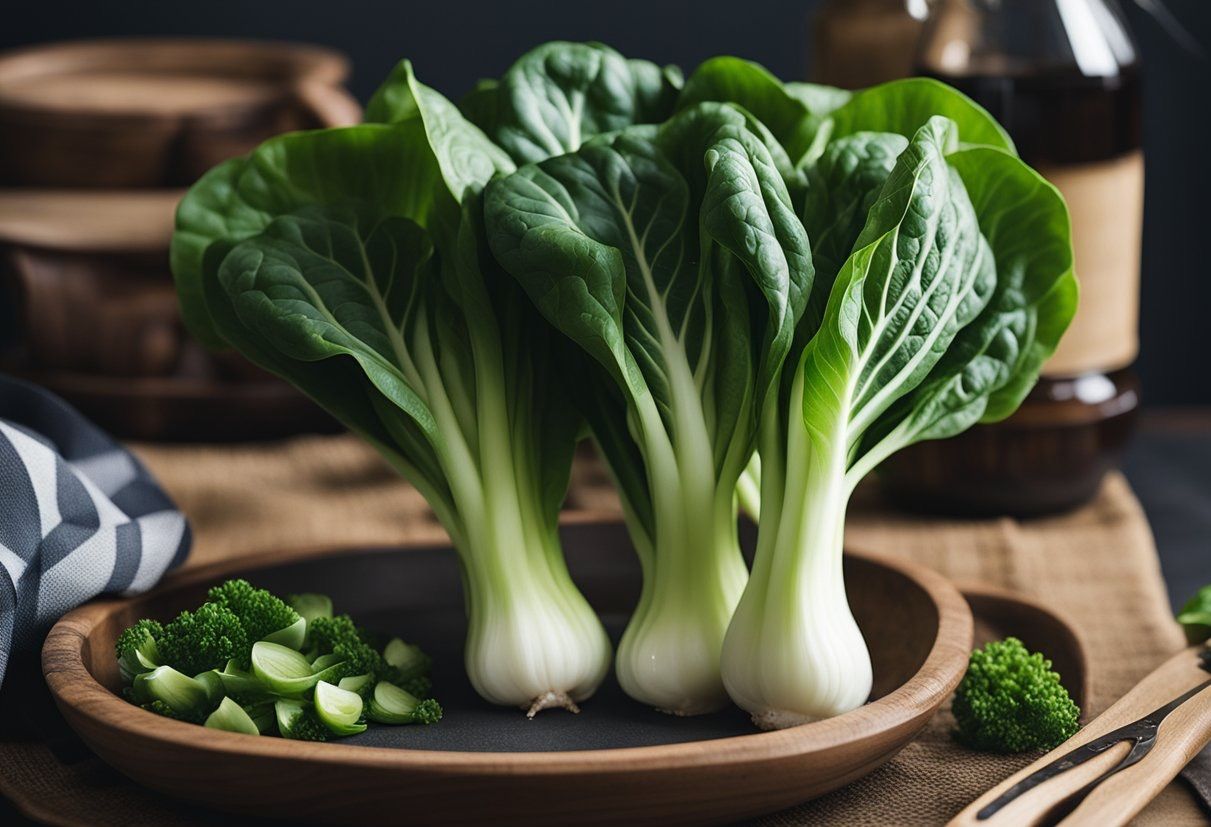How to Grow Bok Choy
Bok choy, a crisp and cool-season green vegetable, often called "pak choi," is a vibrant and delicious plant that thrives during the spring and fall seasons, and its flavor even improves under light frost conditions.

Table of Contents
To cultivate bok choy successfully, providing the right growing conditions is essential.
This includes proper sun exposure, soil pH, spacing, and consistent watering and mulching.
Following simple guidelines and nurturing your plant can contribute to a thriving garden and reap the benefits of your homegrown bok choy.
About Bok Choy
Bok choy, or Chinese cabbage or Brassica rapa, is a leafy green biennial plant.
It is part of the cruciferous vegetables family, making it a nutritious and tasty addition to your garden.
As a cool-season crop, bok choy thrives in full sun to part sun and prefers neutral soil pH.
With its wide, white stalks and vibrant green leaves, bok choy brings visual appeal and a unique flavor to your dishes.
Growing Bok Choy
To grow bok choy, start by choosing the appropriate time for planting, either in early spring or late summer.
In early spring, begin sowing seeds when the danger of frost has passed, while in late summer, plant about 4-6 weeks before the first fall frost date.
Bok choy prefers growing in full sun to partial shade, needing at least 4-6 hours of direct sun daily.
Plant seeds directly in your garden or transplant seedlings outdoors.
Sow them at a depth of 1/4 inch and space them about 1-2 inches apart, with rows at least 18 inches apart.
For a continuous harvest, practice succession planting by sowing new seeds every two weeks.
Remember to take note of the weather, as bok choy is prone to bolting under high temperatures and will need more attention if planted in spring.

Caring for Bok Choy
Sun and Temperature
Bok choy thrives in cool-season weather and can tolerate partial shade.
They can be grown in full sun during fall but need partial shade during hot weather to avoid bolting.
Water and Humidity
Keep the soil consistently moist by watering regularly without overdoing it.
Mist the leaves occasionally to maintain proper humidity, especially when growing bok choy indoors on a windowsill.
Soil
Bok choy prefers fertile, well-draining soil with a pH of 6.0-7.0.
You can enhance your soil by adding organic compost or well-rotted manure at planting time.
Fertilizer
Fertilize your bok choy plants with a balanced, organic fertilizer every 2-3 weeks throughout their growth.
This ensures they receive essential nutrients for healthy growth.
Repotting
Transplant bok choy seedlings into separate pots or garden beds once they are about 3-4 inches tall.
Be sure to space the plants properly (12-18 inches apart) in rich soil.
Pruning and Propagation
To propagate bok choy, save some seeds from the flower stalks.
Prune any dead leaves or damaged parts of the plant during its growing cycle to maintain overall health.
If a plant bolts and flowers, it will not regrow; save the seeds for future use.

Troubleshooting Plant Problems
Growing Problems
To prevent bolting, plant bok choy in the spring 4 to 6 weeks before the last frost date or as a fall crop 4 to 8 weeks before the first frost date.
Ensure your bok choy receives full sun to partial shade and has well-draining soil.
Weather and temperature can significantly impact growth; it thrives in cooler conditions (zones 4-7).
Monitor sudden temperature changes, which may cause yellowing leaves and bolting.
Pests and Diseases
Bok choy can be susceptible to pests like aphids, cabbage loopers, and flea beetles. Use row covers to protect and practice crop rotation to combat these issues.
Diseases can also affect your plants.
Look for resistant varieties and ensure proper spacing to allow for good air circulation, which helps prevent fungal infections.
Companion Planting
Select companion plants that can help deter pests and promote healthy planting growth. Combine bok choy with beneficial companions like:
By following these tips, you should be able to address the most common bok choy growing problems and maintain a thriving crop.

Conclusion
Growing bok choy can be a rewarding experience for gardeners, as it offers a delicious and nutritious addition to your meals.
You can ensure a successful harvest by starting your seedlings indoors and transplanting them to your garden at the appropriate time.
Varieties such as baby bok choy and others provide different flavors and textures.
To effectively grow bok choy, be mindful of the specific needs of this plant, such as soil pH, and avoid bolting by protecting it during hot days.
Harvesting is typically done when the stalks and leaves have reached your desired size, but be sure to leave some of the roots intact for potential regrowth.
With careful attention, your bok choy crop will thrive in your garden, providing fresh and tasty produce.
Frequently Asked Questions
What is the ideal temperature for growing bok choy?
Bok choy thrives in cooler temperatures, typically between 55-75°F (13-24°C).
Plant it in the spring or fall when temperatures are more suitable to promote healthy growth.
Can bok choy be grown hydroponically?
Yes, bok choy can be grown hydroponically.
Hydroponic systems often provide increased control over the growing environment, leading to faster growth and healthier plants.
How long does it take for bok choy to mature?
The time for bok choy to mature depends on the variety, but it generally falls within the 30 to 60-day range.
Keep an eye on your plants and harvest according to your desired size.
Does bok choy regrow after harvesting?
Bok choy is capable of regrowing after harvesting.
Place the cut stem in a bowl with warm water in a sunny spot in your kitchen, making sure to change the water daily to encourage regrowth.
What to do when bok choy starts bolting?
Bolting is a sign that bok choy is transitioning to its flowering stage. To prevent bolting, maintain cool temperatures and consistent soil moisture.
If bolting occurs, harvest the plant immediately to retain its flavor and texture.
How to grow bok choy in different regions, such as Texas?
In hotter regions like Texas, plant bok choy in the early spring or fall to take advantage of cooler temperatures.
Use shade cloth to protect the plants from intense sunlight and ensure adequate soil moisture to promote healthy growth.



